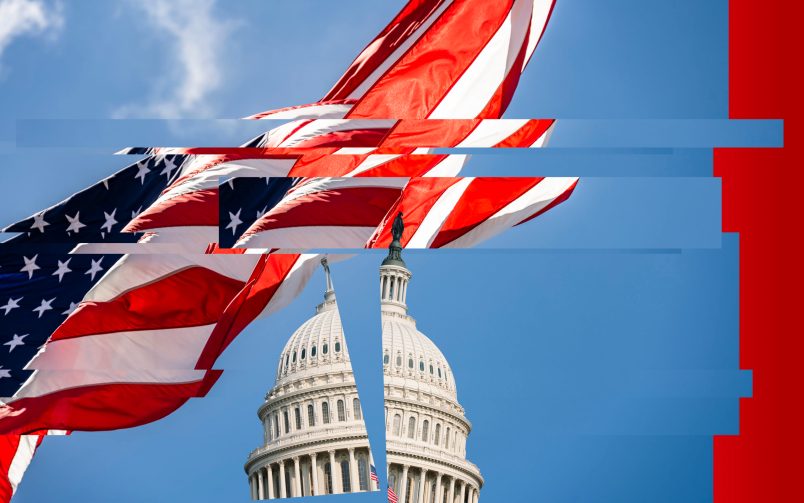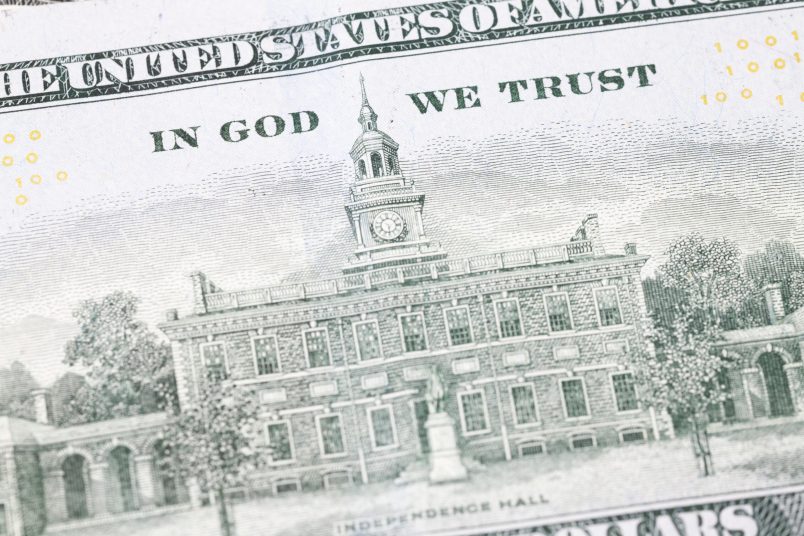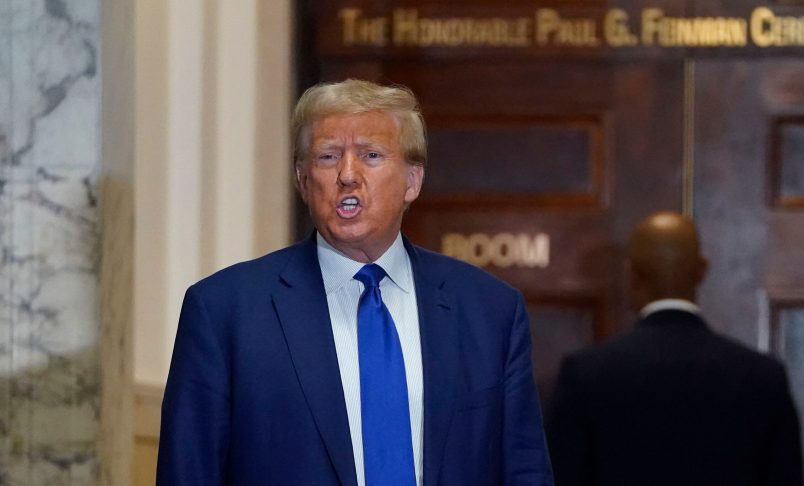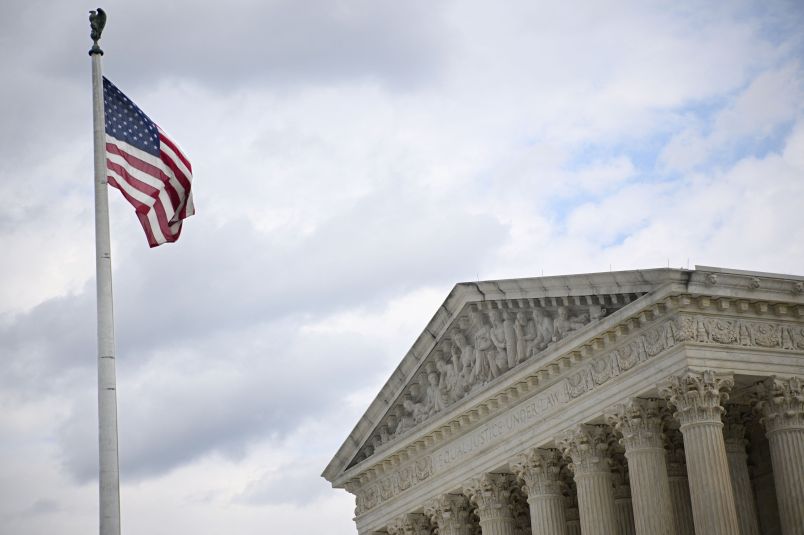This article is part of TPM Cafe, TPM’s home for opinion and news analysis.
The 117th Congress has only just begun, but it’s already providing a window into rapid shifts in our national politics. The impasse over Kevin McCarthy’s speakership was not only historic, it once again surfaced questions that have bubbled up repeatedly in recent years, about the cohesion of the GOP and the ways in which Trump era, intra-party skirmishes may be an indication of party realignment. The GOP’s worse-than-expected midterms showing in an election defined by baggage-laden, Trump endorsed candidates, and non-Trump conservatives’ angst over their 2024 presidential prospects, also suggest that something about the decades-old Republican coalition — which has brought together libertarians, evangelicals and military hawks — has to give.
Political scientist Walter Dean Burnham theorized that political realignments happen in the U.S. every 30–40 years, and are marked by changes in ideology or positions on issues within a party with a decisive electoral outcome. Political scientists generally agree that a major realignment happened in 1932; they debate whether realignments in the following years count as realignments. The 1964 election saw an issue-based realignment over Civil Rights, whereas the 1980 election marked an ideological realignment in the Republican Party towards a fuller embrace of cultural conservatism and economic libertarianism. Some also point to the 1994 midterms as a realignment, with Republicans winning on a wave of cultural backlash, the South becoming solidly Republican, and religious issues emerging as a new, central cleavage in American politics.
If you buy into both Burnham’s theory and the idea that ‘94 constituted a political realignment, we would be due for another major party realignment in 2024, or soon after. And the possibility seems plausible. We began to see indications of what appears to be the current brewing realignment as early as the 2008 election. The 2019 book Identity Crisis, by political scientists John Sides, Michael Tesler and Lynn Vavreck, points to a large shift in party identification starting in 2010, triggered by the election of President Barack Obama. Following the election of the first Black president, a Democrat, white voters who are “racially conservative” fled the Democratic Party for the Republican Party. By the 2016 election, the historic Democratic “blue wall” of Michigan, Wisconsin and Ohio was no longer so sound: All three states ultimately voted Republican.
But if a political realignment began with backlash to Obama, it is not yet complete. Two of those three states were recaptured by Democrats in 2020. And more evocatively, the Republican Party’s own leadership has continued to wrestle with the political forces that emerged in 2010, given voice through the Tea Party, the Freedom Caucus, and, later, Donald Trump. As it grapples with the shift, the Republican Party has struggled to advance a policy agenda and even to corral its own members. McCarthy’s speakership debacle put this on full display. Perhaps by 2024, some of this internal chaos will be resolved, and we will see a culmination of ideological shifts, continuing shifts in who forms each party’s base and decisive political victories qualifying as a political realignment.
That would complete the political realignment already underway. But as the newly reconstituted parties emerge, we might wonder what political realignments will follow over the span of our lifetimes — over the next 50 years — and wonder about the opportunities we have in the present to shape them. As Gen Z and Millennials embrace their power as voters, are elected to political office, and become members of civil society, they’ll begin to steer us toward where we’ll be a half-century from now, in 2073. By that year, if the trend of a political realignment every 30–40 years continues, we may have gone through at least one major party realignment — in the 2050s — and be beginning to see signs of another one as we head towards the 2080s.
In 2073, Gen Z will have taken the place of today’s Boomers: Its members will be 61–76 years old. Millennials will be even older: 77–92 years old. Older people have historically been politically influential. They vote. They give money. In many cases, they run the corporations and political institutions and media organizations that help fund and advertise and otherwise buoy a candidate to victory. And perhaps, most importantly, they parent the next generation — passing down values, ideology, and modeling what it means to be a citizen. So what do we know about Gen Z and Millennials’ politics, and what can it tell us about how our country’s politics might look in 50 years?
The first thing is that Millennials are not becoming more conservative as they age, the first time that is true of a generation in recorded history. Of course, political beliefs of both Gen Z and Millennials may still change over time, and we have no idea what new issues may emerge or what political beliefs the next three generations that will be of voting age by then will hold. Importantly, I don’t think we can assume that there will be a continuation of the trend of future generations holding increasingly “progressive” views. We also don’t know if issues that we currently consider settled might become contested again.
That said, current polling shows that there are certain issues that play a major role in our politics — issues that are currently unsettled — that might well be settled in 50 years, because Gen Z and Millennials (including a majority of Gen Z and Millennial Republicans) agree upon them.
For example, given these areas of agreement among Millennials and Gen Z: In 2073, we may see the issue of same-sex marriage settled and the reality of systemic racism widely acknowledged. Additionally, a majority of Americans may be looking for government to do more to solve problems. A majority may support unions. Conversely, we can expect religion to play a smaller role in our politics. We may see trans rights, climate change, and trust in government as more central divisions between our political parties. The effects that other demographic shifts will have — such as the changing racial demographics and education demographics — are less clear. But given these trends, we have the opportunity in the present to shape what becomes a major cleavage and what doesn’t.
Interestingly, issues that are currently politically contested are areas Gen Z and Millenials largely agree on. Four major ones are same-sex marriage (84% of Gen Z and Millennials say same same-sex marriage is a good thing for society or that it doesn’t hurt), the role of government (70% of Gen Z and 64% of Millennials say government should do more to solve problems), racial discrimination (roughly two-thirds of Gen Zers and Millennials say that Black Americans are treated less fairly than whites) and unions (64% of Gen Z and 61% of Millennials approve of unions). The role of government and racial discrimination are areas where parts of the current GOP coalition takes views that run counter to those of younger generations, suggesting the things that hold the GOP together currently will not continue to do so as Gen Z and Millennials grow in their political power — unless future generations hold vastly different views.
So what could a future party be aligned around? My hypothesis is that our political parties in 2073 will be aligned around areas where Gen Z is divided. Namely, trans rights (half of Gen Z and Millennials think that society is not accepting enough of those who do not identify as a man or a woman), climate change (54% of Gen Z and 56% of Millennials believe that the earth is getting warmer due to human activity), and trust in the political system (43% of Gen Z and 34% of Millennials say they don’t trust the system, while 25% of Gen Z and 39% of Millennials do).
There is also room, in the coming years, for persuasion and change around whether these remain contentious issues or not. In some of these areas Gen Z and Millennials currently say they are unsure/undecided. For example, 22% of Gen Z and 19% of Millennials say, perhaps surprisingly, that they remain unsure about the causes of global warming. If a majority can be persuaded in one direction or the other, this may not be a devisive political issue but, instead, a settled one. Similarly, 32% of Gen Z and 26% of Millennials neither agree nor disagree about trusting the political system. Again, if a large share of those currently undecided take a stance in one direction or the other, this may not be a contentious political issue. Persuading Gen Z and Millennials to take a stance now will determine what our politics will look like over the next 50 years.
Trust in government has been declining since the 1980s; only about 20% of Americans said in 2022 that they trust government. Only 43% of Americans overall say government should be more active. While Gen Z and Millennials are aligned with the current overall population in their low trust of the political system, they are significantly more likely to believe that government should play an active role: 70% of Gen Z and 64% of Millennials say government should do more to solve problems. The question that will be determined over the next 50 years is what the government doing more to solve problems looks like in practice — particularly whether government’s more active role is rooted in democracy or authoritarianism.
Presently, according to the think tank Freedom House, democracy is in decline worldwide. The trend, according to the organization’s metrics, has been ongoing for the past 16 years; the United States experienced an 11-point decline from 2010 to 2020, with 6 of those points during the Trump years.
Furthermore, there is currently a huge asymmetry between the parties on authoritarianism. The Republican Party engages in election denial, pushes political violence and champions legislation attempting to limit speech and further marginalize marginalized communities. But as we go through multiple political realignments over the next 50 years, authoritarianism may not remain asymmetrically in one of the parties. In addition to thinking about the policy issues and ideologies that will create political realignment, we also need to think about democracy and authoritarianism as an axis on which the parties could possibly be divided. As Gen Z and Millennials take the lead in political life, there will be a reckoning over democracy: whether it continues to decline or whether we reform it to revitalize and reinvigorate our democracy, making it functional and inclusive for the next generation.
A shift in how religious Gen Z and Millennials are and their religious affiliation is also likely to impact any realignment through a shift in the role religion plays in our politics. The issue became a major cleavage in the 1980s, when the Christian Right and the Moral Majority became an animating force in the Republican Party. Over the past 15 years, the retention rate (meaning the rate at which people continued to stay in their religion over time) for religiously unaffiliated Americans increased by nearly 20 points from 46% to 65%, meaning those who were unaffiliated as a child remained unaffiliated, as adults, in increasing numbers.
Currently, Gen Z is 34% religiously unaffiliated and Millennials are 29% religiously unaffiliated. Additionally, among those who have left religion, 69 percent agree that religion causes problems more than it provides solutions. More than 6 in 10 (63 percent of) Americans who have always been religiously unaffiliated also believe religion causes more problems in society than it solves. This is unlikely to change even as Gen Z and Millennials have children given that more than 8 in 10 (82 percent of) religiously unaffiliated Americans — including roughly equal numbers of those who left a religion and those who have always been unaffiliated — disagree with the idea that children should be raised in a religious community. Furthermore, currently, Gen Z is 9% white evangelical Christian and Millennials 11% white evangelical Christian. This has major implications for how the base of the GOP is likely to evolve given that white Evangelicals are currently 28% of the total electorate and 75% of them voted for Trump.
There are additional ways Gen Z, in particular, differs from previous generations across race and education, the impacts of which are being determined now. Gen Z is currently 52% white but, through immigration, is on track to become the first majority non-white generation by 2026. However, this doesn’t necessarily tell us how Gen Z will vote in future decades because any group experiencing shrinking power (including other non-Hispanic people of color) demonstrates a shift towards more conservative views. Furthermore, we don’t know how policy priorities may shift or what other identities may become activated.
Similarly, while Gen Z is likely to be the most college educated generation in American history (with 57% college educated), the impacts of this education are also unknown. As student debt continues to climb, the role college plays in social mobility may change. Presently, there are differences in the experiences of those who are college educated and their non-college peers, including those who are college educated saying they are less lonely and feel more support from friends, and those who are college educated becoming more active in their communities and more likely to know community leaders. However these trends may or may not continue depending on a variety of factors, including policy interventions, as the proportion of college graduates increases. Again, the impact of differences in race and education amongst Gen Z on the future of our politics is being decided right now in the ways we talk about demographic change, activate identities, address student debt, create social mobility, address the loneliness epidemic and create robust community connections.
The choices we make today will impact which issues are settled and which become cleavages. Specifically, trans rights, climate change, and trust in government may become more central divisions between our political parties since Gen Z and Millennials are not aligned on these topics. We remain in a period of great fluctuation, with our country litigating its relationship with complex concepts such as American identity, the nature of work, democracy, technology, and our relationship with our environment. Historically, this is reminiscent of the transition from the Gilded Age to the Progressive Era, as rapid industrialization, urbanization, innovations in science and technology, and the rise of big business in the Gilded Age led to legislation in the Progressive Era to rein in big business, combat corruption, free the government from special interests, and protect the rights of consumers, workers, immigrants, and the poor. The future is being decided today — democracy or authoritarianism, ongoing climate disaster or a greener world, inclusion or hate, abundance for all or winners and losers.






